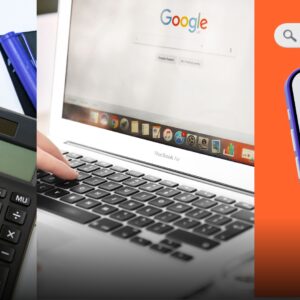Imagine a small boutique in Hyderabad doubling its festive sales by reaching 10,000 local shoppers with a vibrant Instagram ad, all for just ₹500 a day. In India, where 750 million smartphone users fuel a $188 billion e-commerce market, Meta Ads—spanning Facebook, Instagram, and WhatsApp—offer small businesses a powerful, affordable way to connect with customers. With 677 million Facebook users and 500 million Instagram users in India by 2025, Meta’s platforms are a goldmine for cost-conscious entrepreneurs aiming to grow without breaking the bank.
Meta Ads India enable precise targeting, mobile-friendly formats, and flexible budgets, making them ideal for small businesses competing with larger brands. Whether you’re selling artisanal sweets in Kolkata or tech gadgets in Bengaluru, Meta Ads can drive leads, sales, or brand awareness on a shoestring budget. This blog explores budget-friendly Meta Ads strategies for Indian small businesses in 2025, covering actionable tactics, tools, real-world examples, challenges, and future trends. Ready to maximize your ROI? Let’s dive into how to make every rupee count.
What Are Meta Ads?
Meta Ads, formerly Facebook Ads, are advertisements run across Meta’s platforms: Facebook, Instagram, WhatsApp, Messenger, and Audience Network. They allow businesses to target specific audiences based on demographics, interests, behaviors, and locations, using formats like images, videos, carousels, Reels, and Stories. For Indian small businesses, Meta Ads are a game-changer due to their low cost (CPC as low as ₹0.51) and ability to reach India’s mobile-first audience.
Key features include:
- Flexible Budgets: Start with as little as ₹100/day, scaling based on performance.
- Advanced Targeting: Reach users by city, language, or interests like “Diwali shopping.”
- Mobile Optimization: Ads are designed for 90% of India’s mobile traffic.
- Analytics: Meta Ads Manager tracks clicks, conversions, and ROI in real-time.
Example: A Chennai café used Meta’s carousel ads to showcase its menu, targeting local foodies, and gained 1,000 new customers for ₹10,000 over a month.
Why Meta Ads Matter for Indian Small Businesses
India’s digital landscape in 2025 makes Meta Ads a must for small businesses:
- Massive Reach: With 677 million Facebook and 500 million Instagram users, Meta dominates India’s social media space.
- Affordable Advertising: CPC ranges from ₹0.51–₹2.26, cheaper than Google Ads’ ₹1–₹5.
- Mobile-First Audience: 90% of users access via smartphones, aligning with Meta’s mobile-optimized formats.
- Local Targeting: Geo-targeting reaches customers in Tier-II/III cities like Patna or Surat.
- High ROI: Optimized Meta Ads deliver 4:1 ROAS (₹4 revenue per ₹1 spent) for e-commerce.
Stat: Small businesses using Meta Ads in India see 30% higher engagement when targeting local audiences, per WebEngage.
Key Strategies for Budget-Friendly Meta Ads
To succeed with Meta Ads India on a tight budget, combine smart targeting, engaging creatives, and data-driven optimization. Here’s how small businesses can thrive in 2025:
Start with a Low Daily Budget and Test
Meta Ads don’t require hefty budgets. Start small and scale wisely:
- Set a Minimum Budget: Begin with ₹100–₹500/day to test ad performance, as Meta’s minimum daily budget is flexible.
- Run Short Campaigns: Test 3–5-day campaigns to identify winning ads without overspending.
- Use A/B Testing: Test two ad variations (e.g., different images or headlines) to find what resonates with Indian audiences.
Example: A Delhi jewelry store tested ₹300/day Instagram Stories ads for a Rakhi sale, scaling to ₹1,000/day after identifying a high-performing carousel, boosting sales by 25%.
Tool: Meta Ads Manager for A/B testing and budget control.
Leverage Precise Audience Targeting
Meta’s targeting tools let you reach the right customers without wasting rupees:
- Geo-Targeting: Focus on local areas (e.g., “Mumbai shoppers” or “Hyderabad foodies”) to lower costs and boost relevance.
- Interest-Based Targeting: Target users interested in “festive fashion” or “budget smartphones” for niche appeal.
- Lookalike Audiences: Use customer data (e.g., email lists) to find similar users, increasing conversions by 20%.
- Language Targeting: Include Hindi or regional languages to connect with non-English speakers.
Case Study: A Surat textile shop used lookalike audiences based on past buyers, targeting “saree enthusiasts” in Gujarat, achieving a 3x ROAS for ₹15,000.
Tool: Meta’s Audience Insights for demographic and interest data.
Create Engaging, Mobile-Friendly Creatives
India’s smartphone users demand scroll-stopping ads:
- Use Short-Form Videos: Reels and Stories (15–30 seconds) drive 30% higher engagement for products like apparel or food.
- Incorporate Cultural Elements: Feature Diwali, Holi, or regional visuals (e.g., Kolam designs for Tamil Nadu) to resonate locally.
- Clear CTAs: Use phrases like “Shop Now” or “Get 20% Off” for instant action.
- Optimize for Mobile: Ensure images are high-resolution (1080x1080px) and load fast on 4G networks.
Example: A Bengaluru bakery’s Reel showcasing Diwali sweets with a “Order Now” button gained 50,000 views and 500 orders for ₹5,000.
Tool: Canva for creating vibrant, mobile-friendly ad visuals.
Retarget Warm Audiences
Retargeting converts users who’ve already shown interest, saving budget:
- Meta Pixel: Track website visitors or cart abandoners for retargeting ads, boosting conversions by 15–30%.
- Dynamic Ads: Automatically show products users viewed, ideal for e-commerce.
- Discount Offers: Offer 10% off to re-engage cart abandoners, as Teabox did for repeat sales.
Example: A Pune fitness brand retargeted website visitors with a “Free Workout Plan” ad, converting 10% of leads for ₹2,000/month.
Tool: Meta Pixel or SaveMyLeads for automated retargeting.
Optimize for Festive Seasons
India’s festive seasons (Diwali, Dussehra, Christmas) spike ad competition and costs:
- Plan Early: Launch ads 7–10 days before festivals to capture early shoppers, avoiding high CPCs.
- Use Lifetime Budgets: Set a fixed budget for festive campaigns to control spending.
- Seasonal Creatives: Highlight festive offers (e.g., “Diwali Discounts Up to 50%”) to boost clicks.
Stat: Festive Meta Ads in India see 25% higher CTR during Diwali, per Mega Digital.
Automate with Meta’s Tools
Meta’s AI tools stretch budgets further:
- Advantage+ Campaigns: Let Meta’s AI optimize ad placements for maximum ROI, ideal for small budgets.
- Automated Rules: Pause underperforming ads or adjust bids automatically to save costs.
- Budget Optimization: Use Campaign Budget Optimization (CBO) to allocate funds to top-performing ad sets.
Example: A Kochi spice retailer used Advantage+ Shopping Campaigns, achieving a 4:1 ROAS with a ₹10,000 monthly budget.
Technologies Powering Meta Ads
Key technologies enhance budget-friendly Meta Ads in 2025:
- Meta Ads Manager: Free platform for creating, tracking, and optimizing ads.
- Meta Pixel: Tracks user actions for retargeting and analytics.
- AI Tools: Advantage+ and Dynamic Ads automate targeting and creative delivery.
- Third-Party Tools: SaveMyLeads automates lead capture, while Triple Whale provides real-time NC-CPA data.
- CDNs: Cloudflare ensures fast ad loading on Indian networks.
Stat: AI-optimized Meta Ads improve campaign effectiveness by 35–80%.
Challenges and Solutions
Meta Ads in India have challenges for small businesses:
- High Competition: Festive seasons increase CPCs. Solution: Target niche audiences and launch early.
- Ad Fatigue: Users ignore repetitive ads. Solution: Refresh creatives every 7–14 days.
- Learning Curve: Ads Manager can overwhelm beginners. Solution: Use Meta’s tutorials or agency support like Mega Digital.
- Cash Flow Issues: Budget constraints limit ad runs. Solution: Use financing like Onramp Funds for consistent spending.
Tip: Monitor CPMs (cost per thousand impressions) to avoid overspending during peak seasons.
Future Trends for Meta Ads in India
Meta Ads will evolve beyond 2025:
- AI Personalization: Ads will dynamically tailor to user preferences, like showing sarees to festive shoppers.
- Reels Dominance: Short-form videos will drive 50% of ad engagement, per Forbes.
- WhatsApp Ads: Click-to-WhatsApp ads will surge with 487 million users in India.
- Cross-Border Growth: Tools like Meta’s playbook will help small businesses target global markets.
- Voice Search Integration: Ads will optimize for Hindi voice queries like “best deals near me.”
Projection: By 2027, 70% of Indian small businesses will use Meta Ads for 40% of their digital marketing, per Statista.
Getting Started with Meta Ads
Ready to launch budget-friendly Meta Ads for your Indian small business? Follow these steps:
- Set Up Ads Manager: Create a Facebook Business Page and access Meta Ads Manager.
- Define Goals: Focus on brand awareness, leads, or sales.
- Start Small: Test with ₹100–₹500/day, targeting local audiences.
- Create Engaging Ads: Use Canva for Reels or carousels with cultural visuals.
- Track and Optimize: Monitor CTR and ROAS in Ads Manager, tweaking underperformers.
- Scale Smartly: Increase budgets by 10–20% for winning campaigns.
Example: A Jaipur handicraft shop ran ₹200/day Instagram Reels ads for Diwali, targeting “home decor enthusiasts,” and earned ₹50,000 in sales for ₹6,000 spent.
Tool Tip: Start with Meta’s free Ads Manager or try Canva’s free plan for ad creatives.
Conclusion
In 2025, Meta Ads India offer small businesses an affordable path to reach 750 million smartphone users and tap into a $188 billion e-commerce market. By starting with low budgets, targeting local audiences, using mobile-friendly Reels, and leveraging Meta’s AI tools, you can achieve 4:1 ROAS and 30% higher engagement. Challenges like competition and ad fatigue are manageable with early planning and creative refreshes. With trends like WhatsApp ads and AI personalization on the horizon, Meta Ads are set to transform small business growth. Launch your first campaign, test locally, and watch your business soar. What’s your Meta Ads strategy for 2025? Share below and let’s grow together! At Bestdigitalmarketingcourseinraipur you will learn all about it and more.









